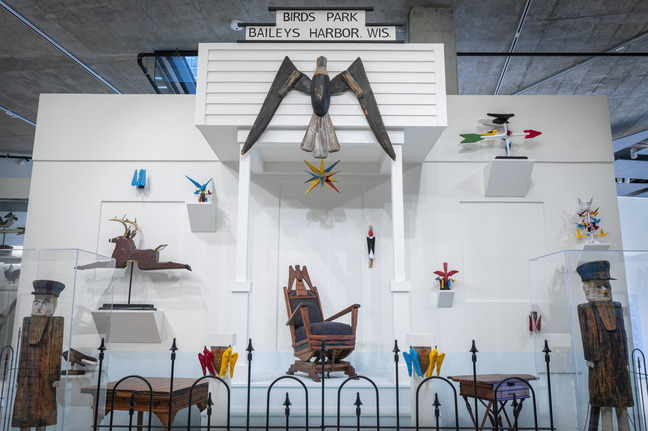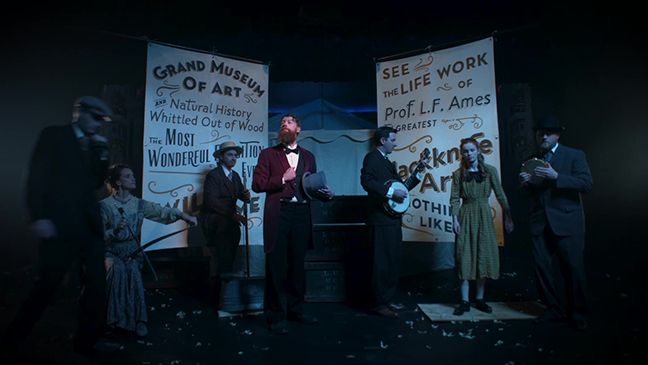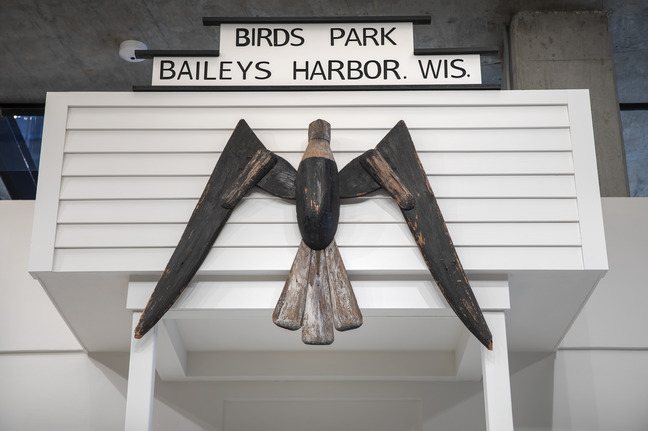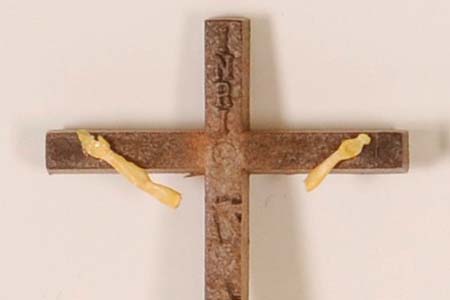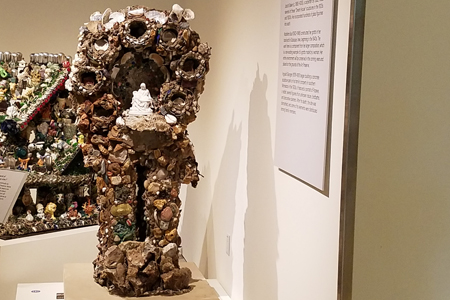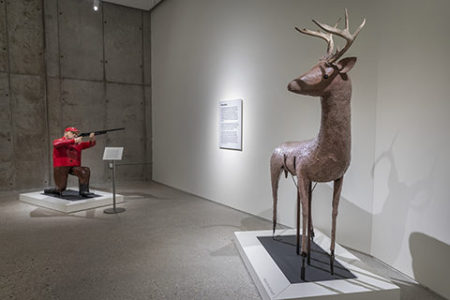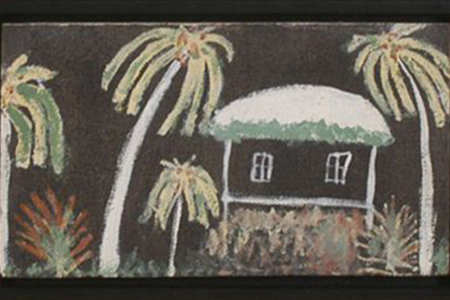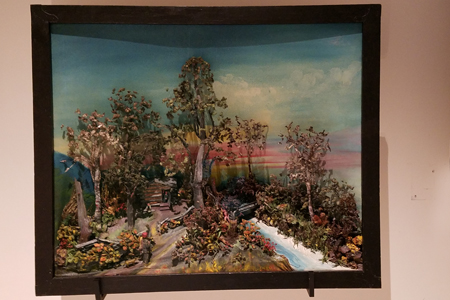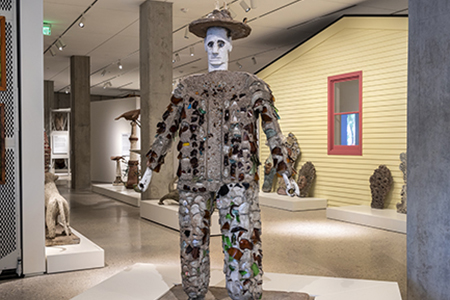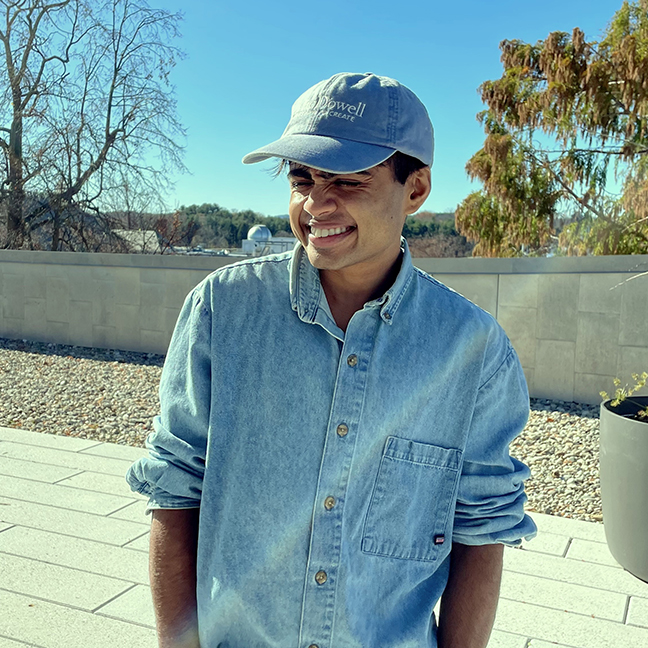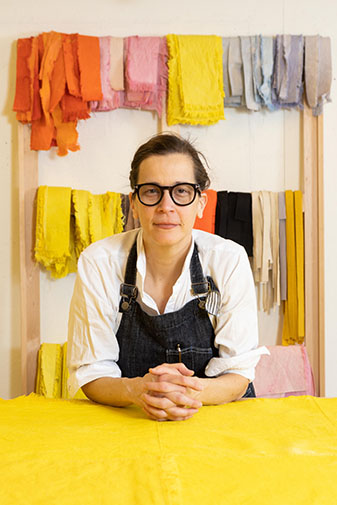
what is an art environment? It's a wisconsin thing!
Wisconsin, widely known for great cheeses and beers, also claims distinction as home to an abundance of the spectacular works of art known as art environments. They are found across the state—from the rolling hills of southwestern Wisconsin to the Northwoods, from the banks of the Mississippi to the shores of Lake Michigan.
Each art environment tells a unique story, tracing the maker’s cultural heritage and personal experiences, and reflecting fervent individualism and the rich traditions of the region.
These immersive works spring from one person’s life-long relationship to creating art on her or his home ground. Often located off the beaten path, they offer entree into inspired worlds of epic imagination.
Herman Rusch (1895–1995) was a retired farmer when he opened a roadside museum near Cochrane, Wis. Concerned that the grounds of the museum were barren, Rusch built a concrete and stone planter circa 1958. Rusch said that he “just kept on building. You don’t ever know where it will end up when you start.” The result is Prairie Moon Sculpture Garden and Museum.
Rusch’s nearly 40 sculptures include a “Rocket to the Stars,” a Hindu temple, dinosaurs, even a miniature mountain. He embellished the sculptures with paint, seashells, bits of broken bottles, and shards of crockery and mirrors. His final piece was a 13-1/2-foot watchtower, constructed with rocks he collected from a quarry high in the nearby bluffs.
The James Tellen Woodland Sculpture Garden, located south of Sheboygan, is dotted with sculptures along a wooded path. Tellen (1880–1957) was inspired to tackle large-scale sculpting after recuperating in a hospital room overlooking a churchyard filled with stone grottos and statues of holy figures.
Many of Tellen’s pieces impart moral messages, such as the scene with a drunk husband being chastised by his fuming wife. The site is also home to sculptures of Abraham Lincoln, a Native American family, and St. Peter, among others.
Along the county highways and backroads of Wisconsin, many more art environments can be found. Among them are Nick Engelbert’s Grandview in Hollandale, Dickeyville Grotto in Dickeyville, Rudolph Grotto Gardens and Wonder Cave in Rudolph, Paul and Matilda Wegner Grotto in Cataract, Fred Smith’s Wisconsin Concrete Park in Phillips, and Ernest Hüpeden’s Painted Forest in Valton.
In June, the John Michael Kohler Arts Center in Sheboygan, Wis., will open the Art Preserve, featuring its world-renowned collection of art environments. On display will be works by Wisconsin artist Mary Nohl (1914–2001), whose lakefront cottage environment is not open to public viewing.
Nohl filled her Fox Point home and yard with works of art. She built driftwood figures, embellished the cottage’s facade with stipple painting and wood reliefs, and populated her yard with concrete sculptures of fish, people, and curious creatures.
Although many reasons for the state’s bounty of art environments have been posited, the undeniable fact is: They are a Wisconsin thing!













